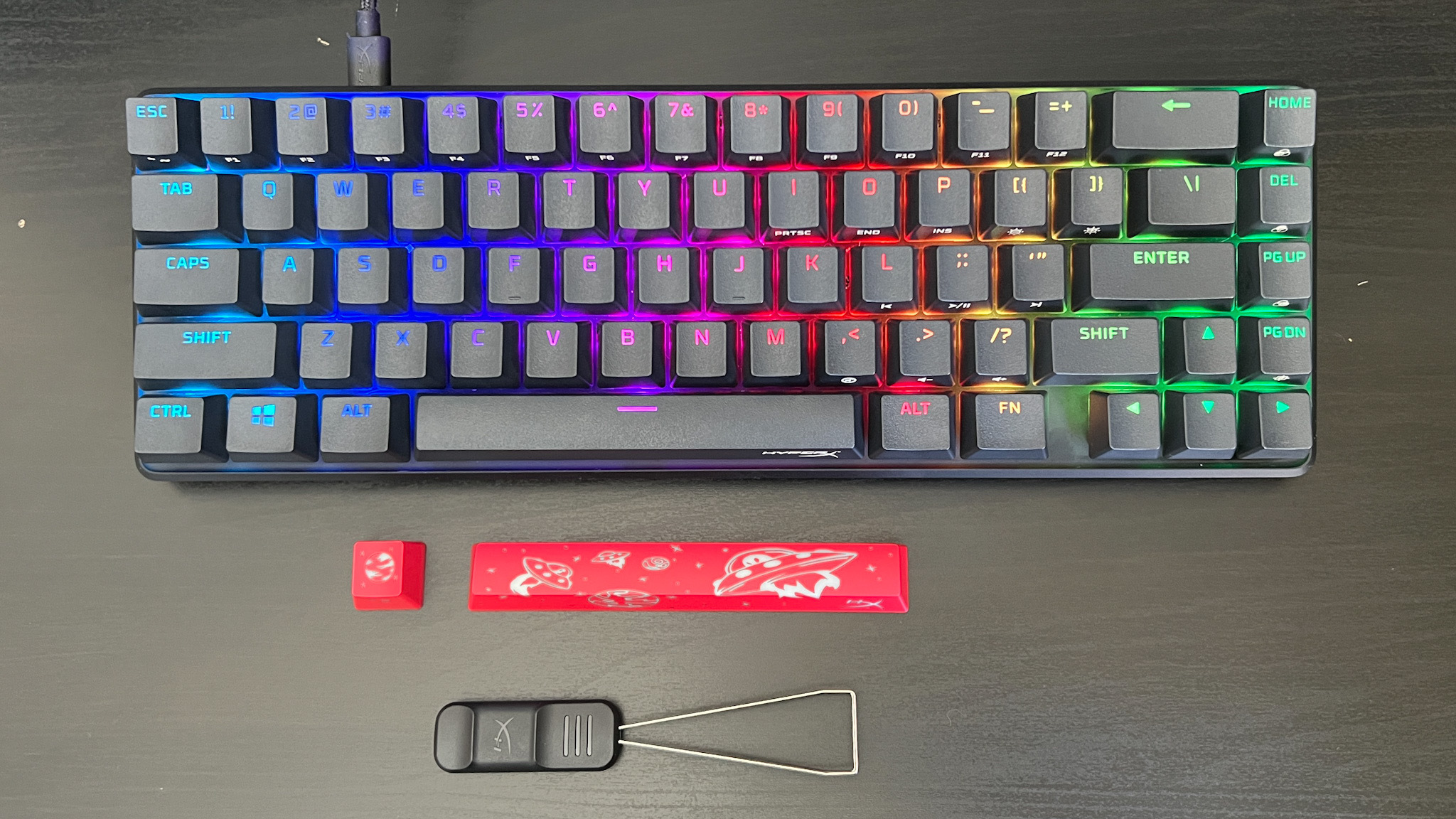GamesRadar+ Verdict
The HyperX Alloy Origins 65 manages to blend everything one might need in a gaming keyboard and only makes a few small sacrifices to get there. Small improvements over the previous model combine to offer up a far better experience overall, and at under $100, there are very few brands competing with such a comfortable, satisfying gaming keyboard.
Pros
- +
Small form factor doesn't limit functionality
- +
Snappy switches
- +
Extra space between keys
- +
Incredibly well built
- +
Improved PBT keycaps
Cons
- -
Only three onboard memory slots falls just under average
Why you can trust GamesRadar+
The HyperX Alloy Origins 65 joins last year's 60% model in the Kingston brand's bid to win over the miniature gaming keyboard space. That 65% form factor now gives us access to some much-needed arrow and navigational keys, while offering a plethora of smaller improvements that all work together to create a far superior experience overall. At $99.99 (it doesn't look like the UK has had a full release yet), however, this deck faces some stiff competition from the Keychron K7, Epomaker Theory TH68, and even the 60% Razer Huntsman.
After reviewing the 60% model last year, it quickly became a mainstay in my rotation. I spent three weeks stress testing the HyperX Alloy Origins 65 across work and play, and can comfortably say this is one of the best gaming keyboards in this smaller form factor available right now. It's certainly replaced the previous model on my desk.
Design
Average price: $99.99
Type: Mechanical
Size: 65%
Switches: HyperX Red
Keycaps: Double-shot PBT
Media keys: Dual-function
Wrist rest: None
USB passthrough: None
Gorgeously textured doubleshot PBT keycaps rise from a solid aluminium base plate, with a comfortable spacing between them and a solid weight to each keypress. The HyperX Alloy Origins 65 is just a touch longer than the previous model, and sits closer to the desk (even on its highest setting), but still manages to feel compact. While there's no wrist rest here, the reduction in elevation still keeps everyday typing comfortable, and longer play sessions were no struggle either.
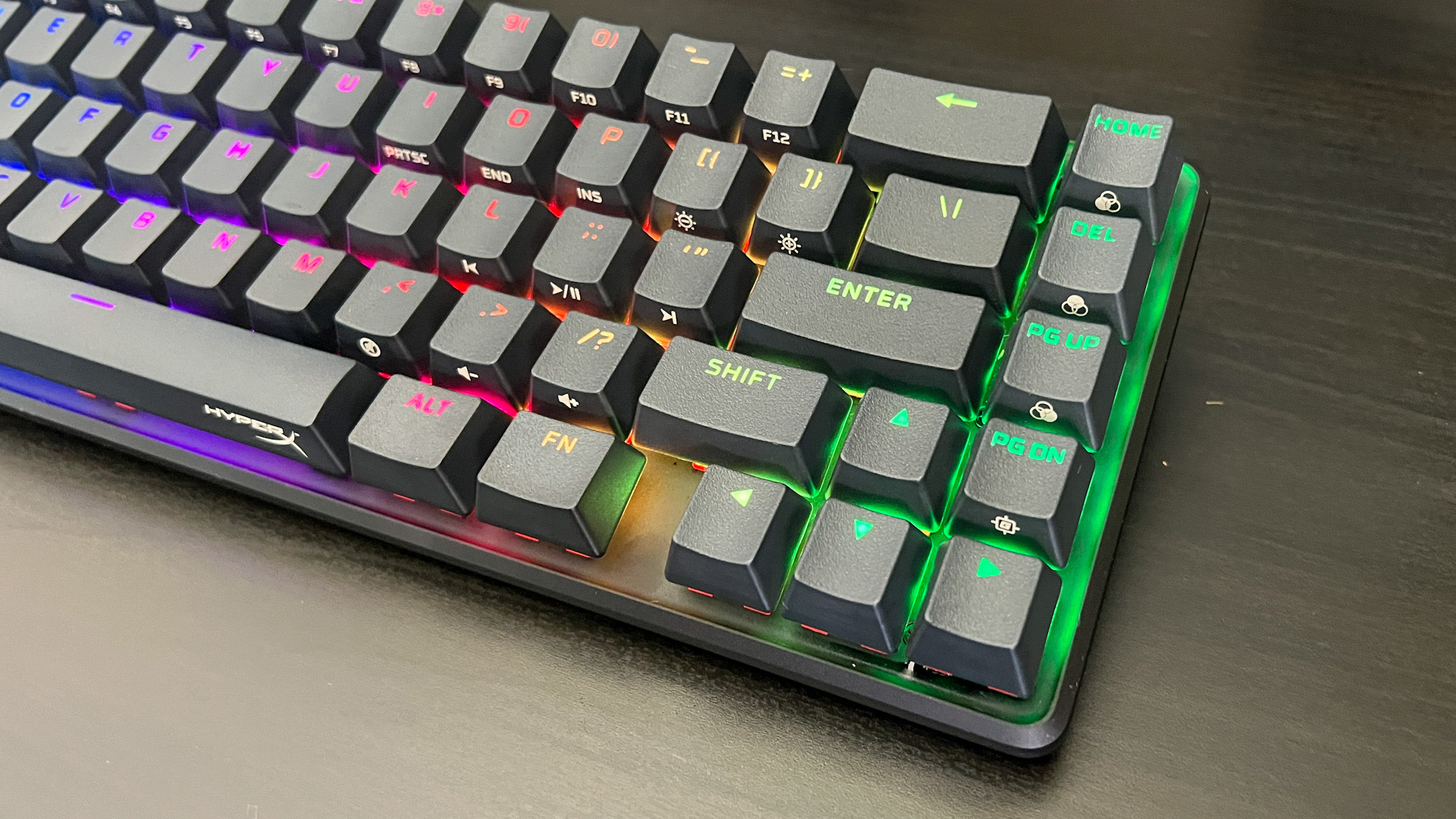
Perhaps the biggest design difference lies with those precious arrow keys. Many 65% decks offer them, and they're a real bonus if you're torn between the two form factors, but nestled neatly inline with the rest of the deck they feel comfortable to reach and still don't take up valuable mouse-sweep space. I hate rerouting arrow keys to mappable functions in both play and work, so this is a real benefit over the previous model.
There's absolutely no flex in either the plate or wider chassis here, a side-effect of an extremely well built board. This isn't a featherlight piece of kit, but it's not among the heaviest gaming keyboards on the market, and it certainly won't be shifting around your desk. Everything feels solid and durable, while just about being backpack-ready.
Features
You're getting the standard array of features one would expect in a $100 gaming keyboard here. The HyperX Alloy Origins 65 offers full n-key rollover, anti-ghosting, and per-key RGB lighting at five brightness settings. That's all everyday fare in this price range, but I was disappointed to find that there were only three onboard memory spaces.
This is inline with the HyperX Alloy Origins 60 and the Alloy Origins Core, but it's still a little under the average for a gaming keyboard. The Razer Huntsman Mini offers five onboard memory presets for around $20 more, as does the Mountain Everest 60. Move away from the smaller form factor, and you'll find that the vast majority of gaming keyboards in this price range match this average five or six preset limit. If you're not concerned with setting up individual profiles, this should only be a blip on your radar, but if you're after something with better macro support, it might be wise to look elsewhere.
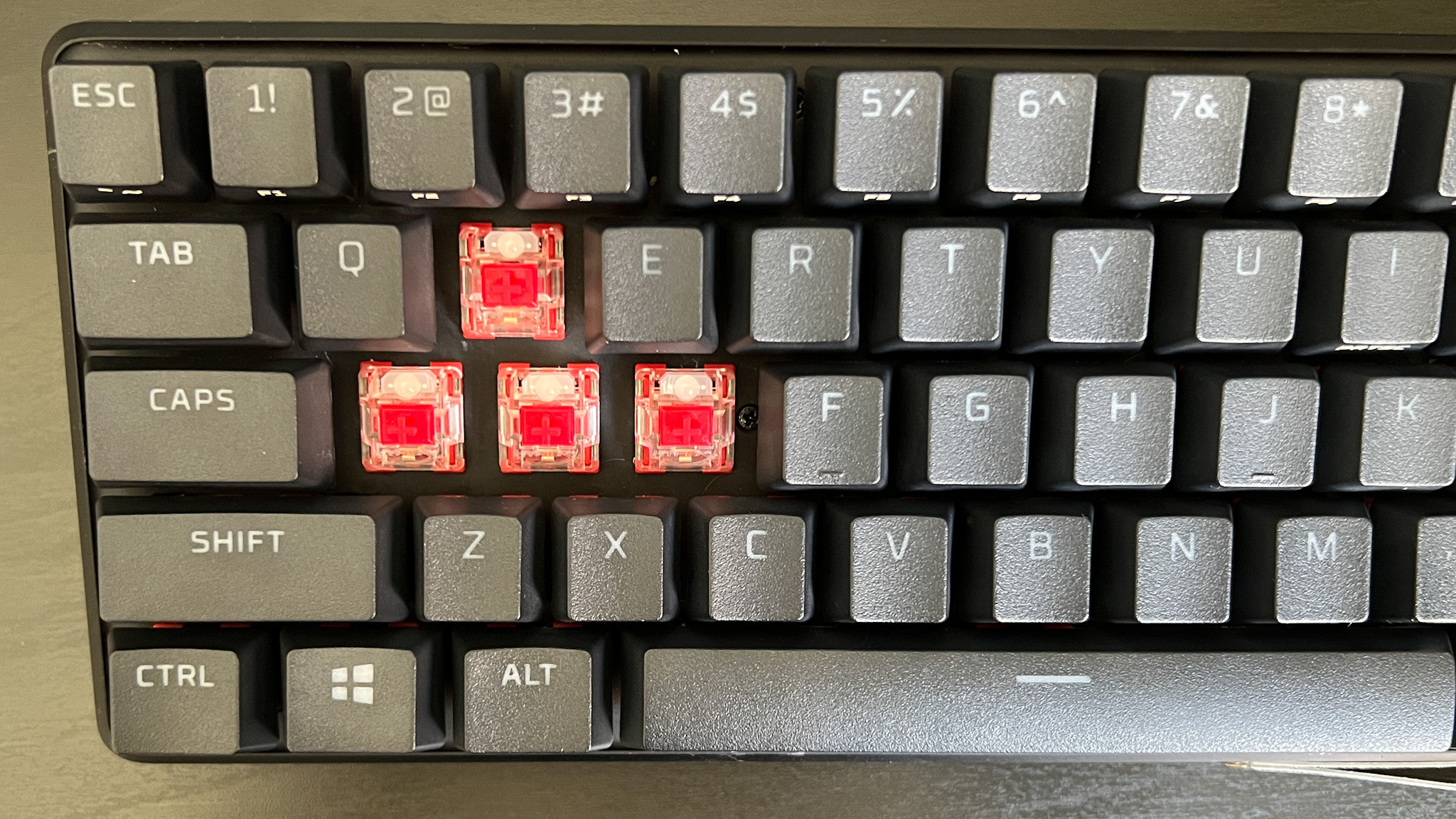
You're also picking up HyperX's proprietary switches here, either linear Red or tactile Aqua. I tested the Red models, with a history of affection for this particular switch. The 45g actuation force is inline with standard red switches, but the 1.8mm actuation point is ever so slightly higher than the 2mm often seen in other keyboards. That makes for a lighter snap and a faster overall actuation, something that performed particularly well in this particular chassis.
Covering those switches, I was overjoyed to find a grippier texture to these doubleshot PBT keycaps than those on the original 60% model. There's plenty more texture here, making the whole experience all the more tactile and comfortable.
Performance
I was enamoured with the experience of typing and playing with the HyperX Alloy Origins 65. While the previous model was a little too claustrophobic for my taste, there's a much better spacing between keys, and switch actuation feels a touch deeper here. That meant the issues with over-sensitivity that originally marred my experience with the 60 are nowhere to be found here.
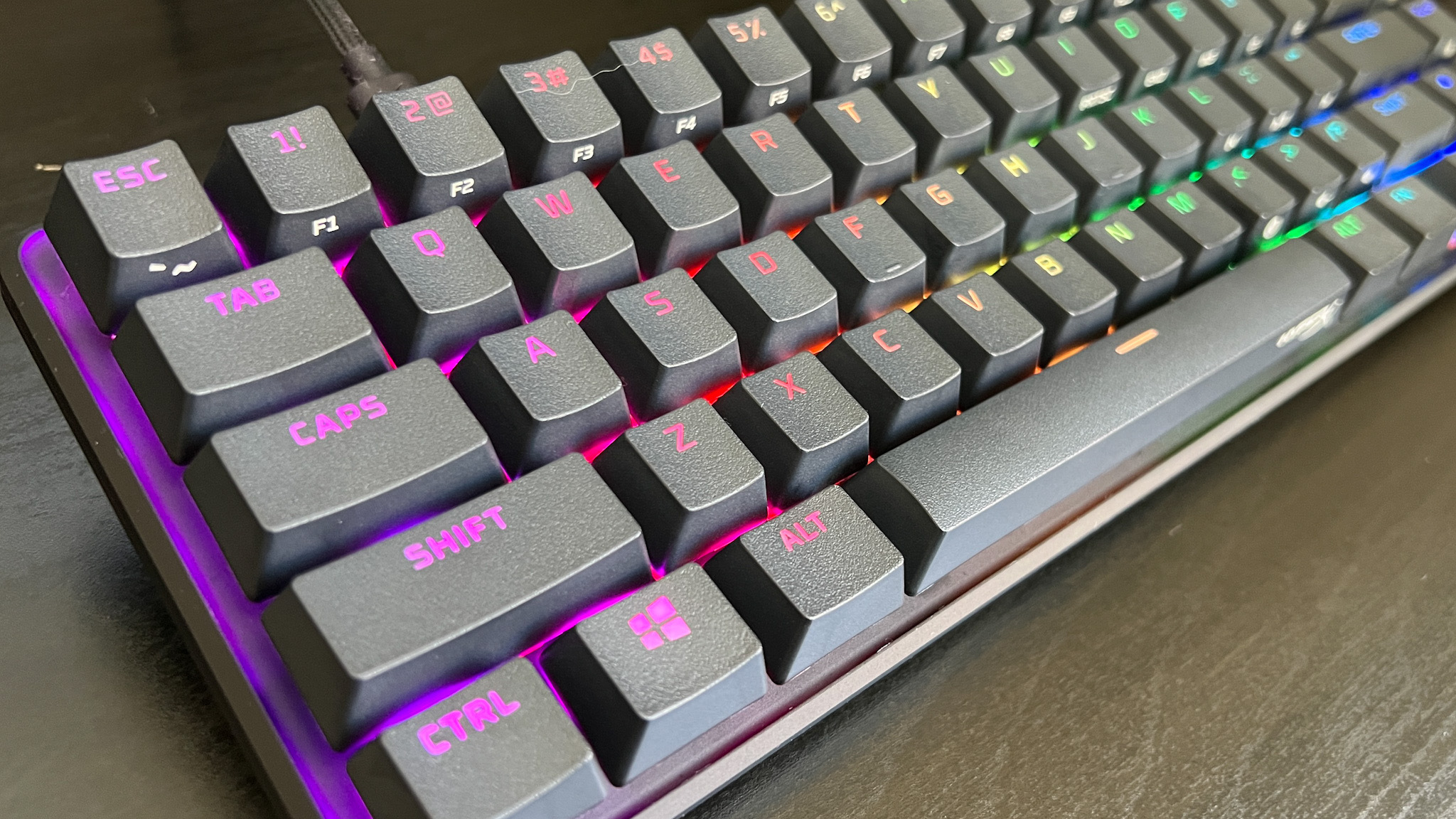
That, combined with the particularly low latency on offer, meant I was ducking and diving in CS:GO with precision and speed, and even managing to pull off some shots because of it. Even slower action games felt the benefit of this responsive set of keys. The reactive switches and wider keyspacing made for comfortable, accurate experiences in both God of War and Shadow of the Tomb Raider, with quick time events and last-minute scrambles all accounted for.
Despite offering fewer onboard memory profiles, actually mapping macros and configuring RGB settings in the Ngenuity software was easy enough. This software certainly isn't the most visually appealing nor the most navigable, but I only spend a little time in these programs, so I wasn't too frustrated.
Should you buy the HyperX Alloy Origins 65?
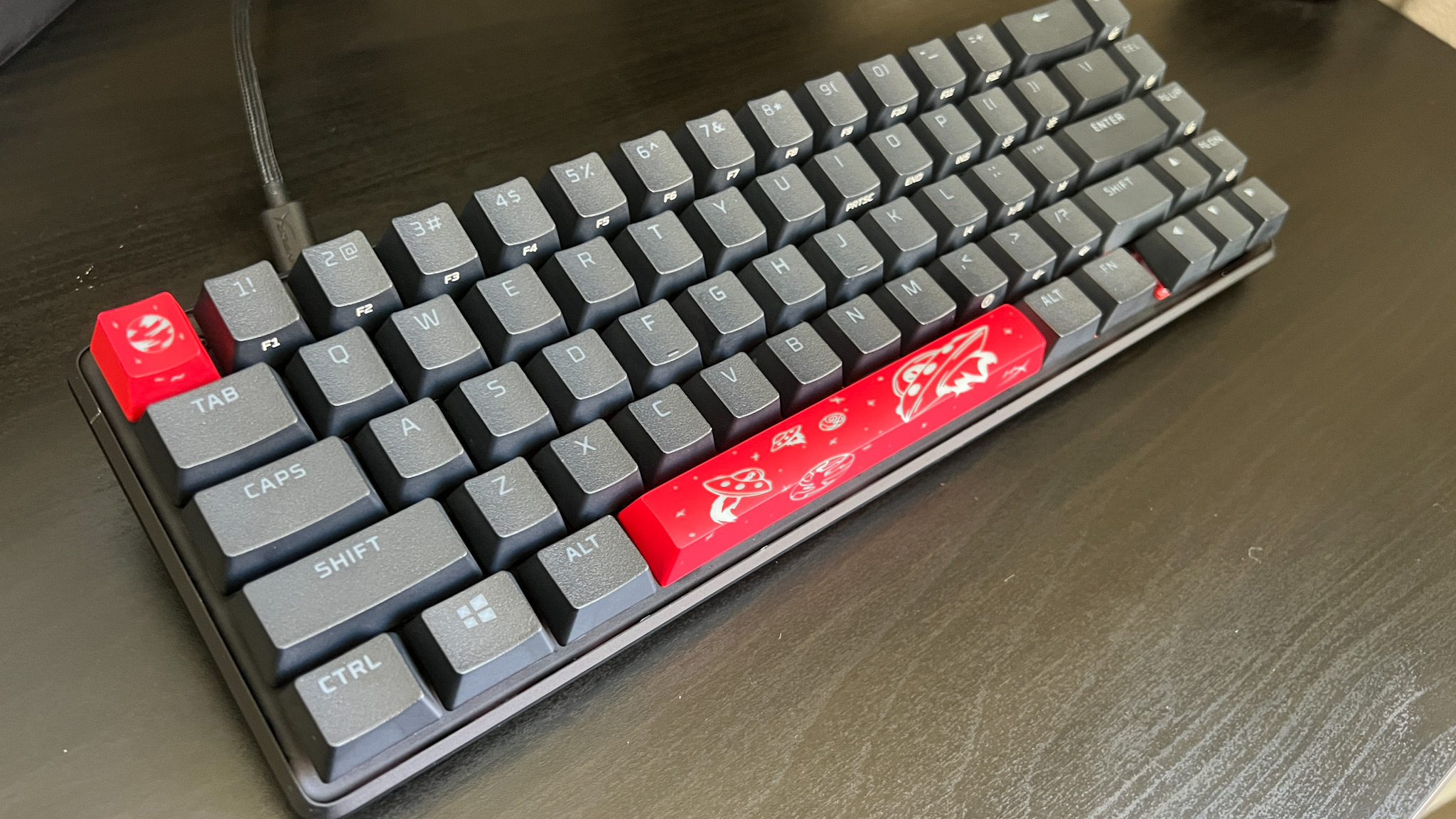
The HyperX Alloy Origins 65 is one of the best 65% keyboards on the market thanks to its satisfying switches, solid design, and speedy response times. I would only recommend the 60% version over this if you're really looking to squeeze down to as small a form factor as possible. The HyperX Alloy Origins 60 feels a little too cramped compared to this, and drops these luxury keycaps and helpful arrow keys to boot.
However, it's also worth considering the Razer Huntsman Mini if you are looking to go smaller. With better macro support (on the fly programming and more presets) and slightly better speeds, it's an excellent option for anyone investing in tournament-grade kit.
For a more flexible experience, though, we'd recommend the Mountain Everest 60, a hot-swappable keyboard. With a unique modular number pad, the ability to change switches, and arrow keys built into its smaller form, this is a go-to for anyone looking for a keyboard with plenty of room to grow and evolve with them.
Overall, the HyperX Alloy Origins 65 offers everything one could want in an everyday 65% deck, aside from two additional macro presets. It's a perfect middle-ground form factor with plenty of speed under the hood. There's very little going against this gaming keyboard, and at under $100, it's an easy recommendation for anyone looking to scale down their setup.
How we tested the HyperX Alloy Origins 65
I used the HyperX Alloy Origins 65 as my daily driver through all work and play over the course of three weeks. During that time I was directly comparing it with the Origins 60 model, as well as the Mountain Everest 60, in a range of productivity and gaming scenarios. I tested during my own everyday play across God of War and Shadow of the Tomb Raider, while stress testing response times and layout in CS:GO. I also used Planet Coaster and Cities Skylines to assess macro suitability and reliability.
We're also rounding up all the best wireless gaming keyboards if you don't like the look of that cable, or check out the latest cheap gaming keyboard deals for even better prices.

Managing Editor of Hardware at GamesRadar+, I originally landed in hardware at our sister site TechRadar before moving over to GamesRadar. In between, I've written for Tom’s Guide, Wireframe, The Indie Game Website and That Video Game Blog, covering everything from the PS5 launch to the Apple Pencil. Now, i'm focused on Nintendo Switch, gaming laptops (and the keyboards, headsets and mice that come with them), PS5, and trying to find the perfect projector.
